Iceland is not commonly associated as a great wildlife destination (except for whales, of course), more so for the unique natural spectacles from giant glaciers to incredible Northern Lights celestial shows. Still, somewhat increasingly, there is an array of wildlife across the country that you’ll want to tick off your bucket list. From the puffin colonies that crowd cliff edges in summer to the ghostly Arctic fox darting across snowy plains in winter (though harder to find than a hotel wifi password), every season offers something new.
Travelling here in a campervan means you can follow the wildlife, adjust your route on the fly, and wake up right next to the action. Whether you’re into whales, seals, reindeer, or just the thrill of spotting something unexpected, and perhaps are ready to dust off your David Attenborough accent once again, Iceland delivers it all.
Unique Species Found Nowhere Else
Some animals here are Iceland’s exclusive club members. Take the Icelandic horse, for instance (the OG of Icelandic wildlife, in my opinion). It’s small but mighty, with a special gait and a history as rich as any saga. Or the Arctic fox, the country’s only native land mammal, which has been here since the last Ice Age, marooned on our shores as the ice began to thaw.
Then there are the bird species like the red-necked phalarope and the gyrfalcon (contrary to what you may now be thinking, these are real and not Tolkien species), which add a special tick to any birdwatcher’s checklist. If you’re lucky, you might even see rare visitors like the blue whale, the largest animal on Earth.
How Iceland’s Landscapes Shape Its Wildlife
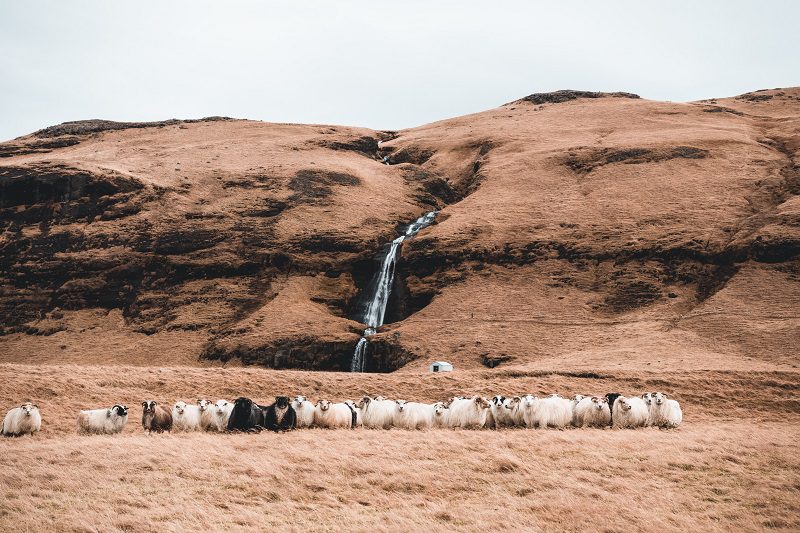
Iceland’s wildlife isn’t just here by chance; the movement of creatures, in fact, almost resembles that of the movement of the very landmass itself. The dramatic mix of glaciers, volcanoes, fjords, and black sand beaches creates habitats that range from the harsh and remote to the lush and teeming with life.
Coastal cliffs are Iceland’s prime real estate for nesting seabirds, while glacial rivers and lakes offer feeding grounds for migratory species. The isolation of the island has helped some species thrive without predators, making them much less shy than you might otherwise expect.
Best Times of Year to Spot Iceland’s Wildlife
Iceland’s wildlife calendar is as dramatic as its landscapes, with each season offering its own unique encounters. From the endless daylight of summer (and I mean endless) that lets you watch puffins and whales at midnight, to the snow-blanketed stillness of winter where Arctic foxes and reindeer emerge against the backdrop of the Northern Lights (the latter are much more easily found), timing your visit can transform your trip.
Travelling by campervan gives you the flexibility to follow these seasonal spectacles, lingering longer when the reindeer decide your camper looks like the ideal grazing spot, or heading to new locations when conditions change, ensuring you never miss nature’s best performances.
Summer Wildlife Highlights: Puffins, Whales, and Seals

Summer in Iceland is a true buffet of wildlife experiences, and with a campervan, you can sample it all at your own pace. Puffins return in huge numbers to nest on dramatic cliff faces dotted around all corners (and islands) if the country, whales feed close to shore in rich summer waters, and seals bask lazily on rocky beaches, often unfazed by quiet human observers.
The near 24-hour daylight means you can spot wildlife well into the night (the insomniac animal lovers’ dream), giving you the unique thrill of watching seabirds dive or whales breach under the midnight sun (evening whale watching tours are available for this very experience). This endless light also makes it easier for photographers to capture crisp, well-lit images without racing the clock, with the illucid Golden hours lingering that extra longer in the summer season.
Winter Wonders: Arctic Foxes, Reindeer, and Northern Lights

On the other hand, winter in Iceland offers a quieter, more intimate kind of wildlife magic, perfect for travellers who prefer solitude and crisp, snowy landscapes. Arctic foxes don their full winter coats, turning pure white and blending seamlessly into the snow, making each sighting feel like a hidden treasure (and believe me, they make you work for it).
Wild reindeer roam the Eastfjords, often moving down from the highlands in search of food, giving you a chance to witness them in vast herds in their natural, wintry element. And while the Northern Lights aren’t technically wildlife, they’re always part of the winter spectacle, best enjoyed from a warm campervan parked in a remote spot, hot drink in hand (or maybe I’m just bias….nah!).
How Seasonal Changes Affect Wildlife Behaviour
The seasons dictate everything here, shaping when and where you’ll find Iceland’s most iconic wildlife. In autumn, migratory birds begin their long journeys south, leaving quieter skies for winter residents.
Early summer brings seal pupping season, when sandy beaches and rocky shores bustle with new life.
Come winter, Arctic foxes swap their brown coats for snow-white camouflage, making them both harder to spot and stealthier to their prey.
Travelling by campervan means you can adapt to these seasonal shifts in real time, positioning yourself at the right place and moment to catch each spectacle, whether that’s at sunrise by a puffin cliff or under a starlit sky beside a reindeer herd (and these dudes can see UV light, so imagine how much more epic the aurora is for them!)
Top Wildlife Watching Locations in Iceland
From cliffside bird colonies to remote Arctic fox territories, Iceland’s wildlife hotspots are as varied as the landscapes they inhabit. Some require a short drive off the Ring Road, while others demand the kind of flexibility only a campervan can provide.
Many of these areas are best enjoyed at quieter times of day, and with a mobile base, you can arrive early, beat the crowds, and enjoy these encounters in peace (or as I see it, the real Icelandic experience).
1. Puffin Colonies on the South Coast and Westfjords
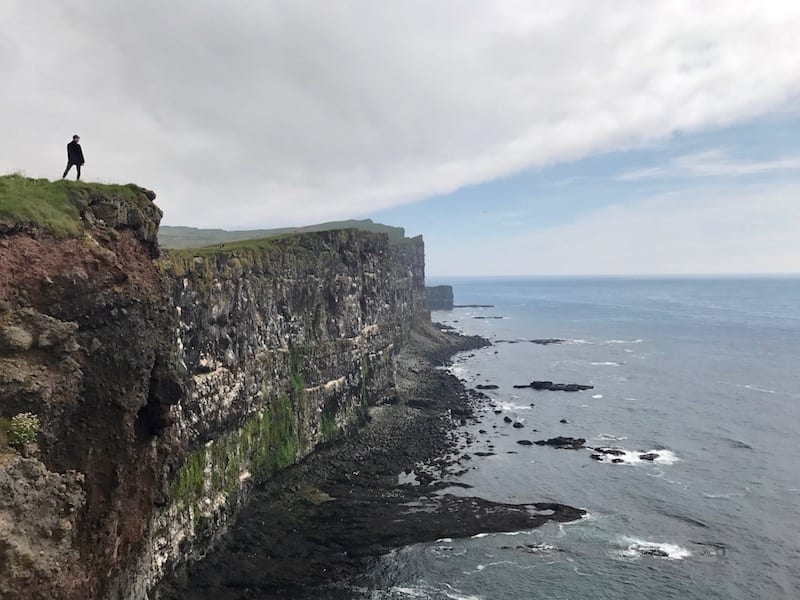
Dyrhólaey and the Westman Islands are prime puffin spots in the south, with accessible viewpoints that make for unforgettable sightings during nesting season. Up in the Westfjords, the towering Latrabjarg cliffs host the largest puffin colony in Europe, where thousands of birds swoop, dive, and socialise in full view. You can often get surprisingly close, thanks to the puffins’ natural curiosity, but be mindful of the fragile cliff edges and the birds’ space; that perfect puffin pic more often than not isn’t worth risking your safety or disturbing their habitat.
2. Whale Watching Hotspots in North and West Iceland
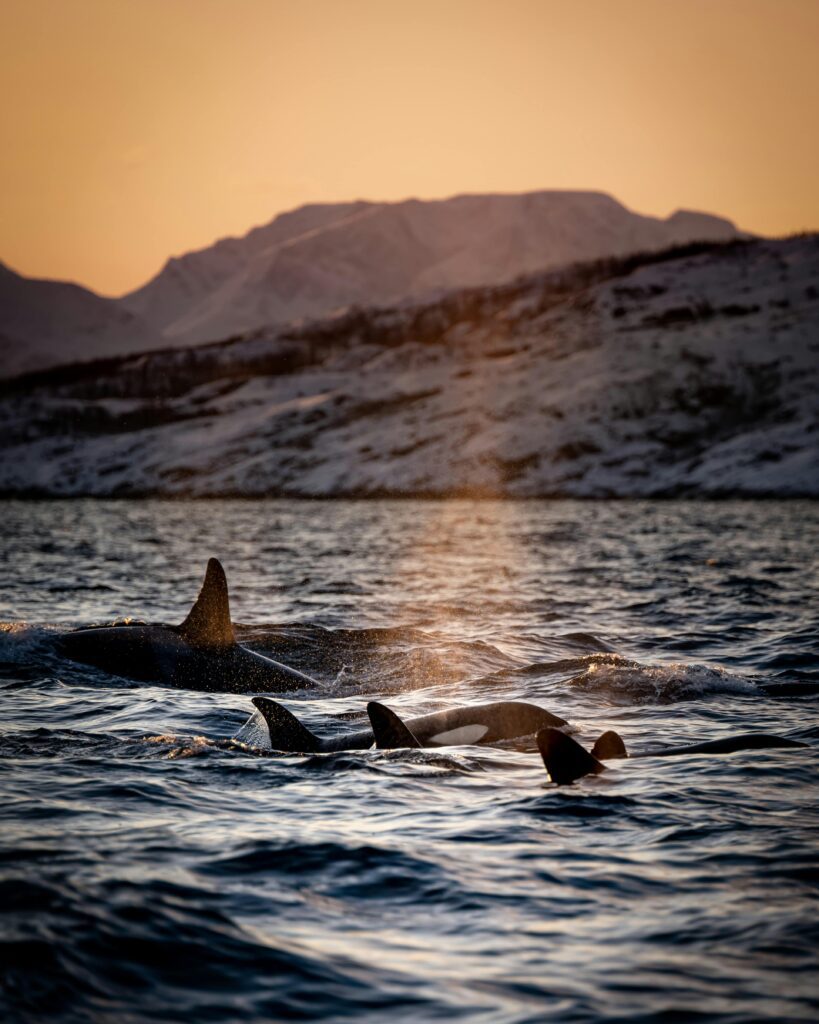
Húsavík is widely regarded as Iceland’s whale watching capital, offering a range of tours with high sighting success rates and knowledgeable local guides. You can also spot whales in the sheltered waters of Eyjafjörður or along the dramatic coastline of the Snæfellsnes Peninsula (Orcas are commonly known to linger here in winter, also), each providing a different vantage point and atmosphere.
In summer, the nutrient-rich waters draw in minke, humpback, and even the elusive blue whale (the largest animal on Earth), creating unforgettable encounters for visitors. Travelling by campervan allows you to base yourself near these hotspots, maximising your chances of seeing these magnificent creatures while enjoying the flexibility to follow migration patterns along the coast. Because often when you find a good spot, you can watch these delightful creatures of the deep breach over and over again – trust me, it’s truly amazing!
3. Arctic Fox Territories in the Westfjords
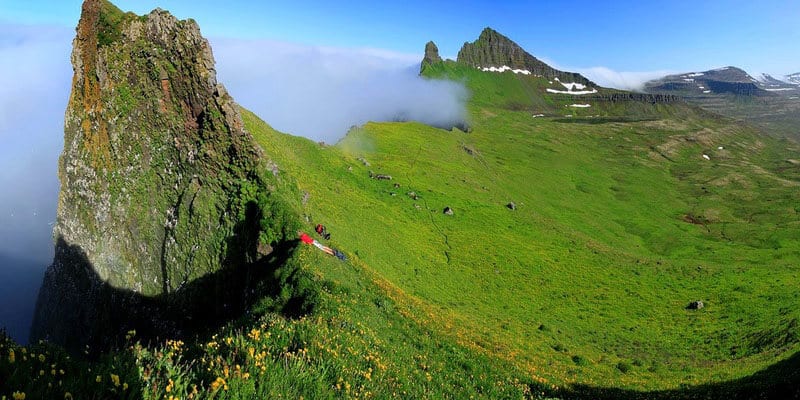
Hornstrandir Nature Reserve is the Arctic fox’s domain, a remote and uninhabited expanse where nature truly rules. Accessible only by boat during the summer months, this protected area offers a rare chance to see Arctic foxes in one of the few places they are more curious than cautious.
Without permanent human settlements, the foxes here have little fear of visitors, often allowing for closer, though always respectful, encounters. Travelling by campervan to the nearby (ish) town of ísafjörður before hopping on a boat to Hornstrandir gives you the flexibility to time your visit for optimal weather and wildlife activity. And, if you have a little extra time in the region (boat delays), make sure you check out Bolafjall viewing point, just a hop, skip, and jump (and maybe a nervy car drive if you’re afraid of heights) away.
4. Reindeer Herds in East Iceland
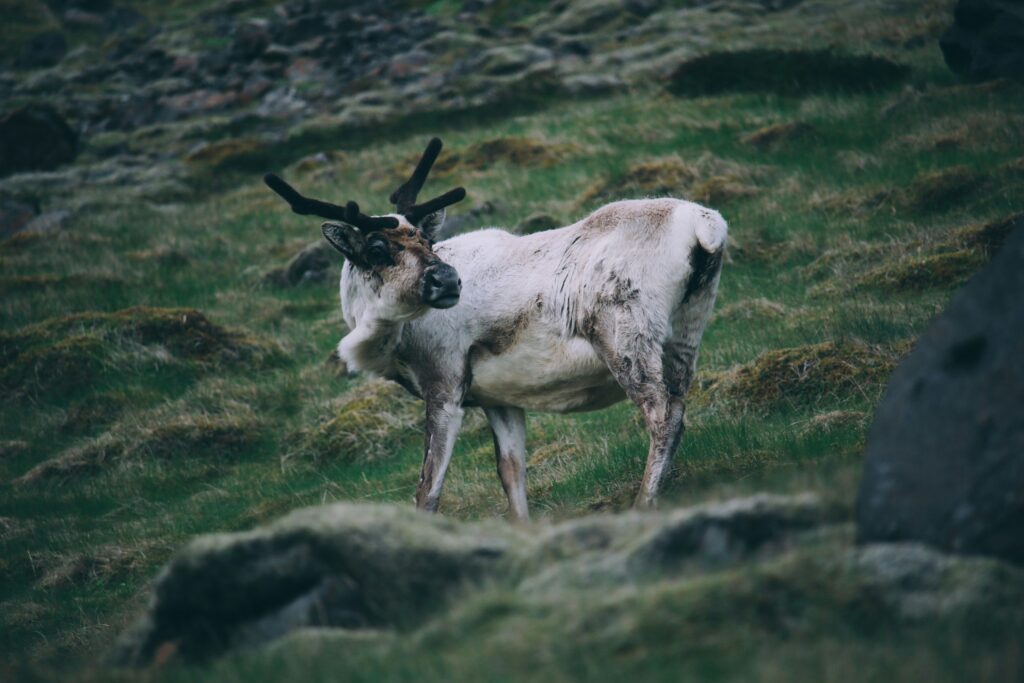
Wild reindeer roam the Eastfjords year-round, often migrating between highland grazing areas in summer and the lower coastal plains during colder months. In winter, you’re more likely to see them in impressive herds as they descend from the mountains in search of food, sometimes appearing right along roadside pastures. I’ve personally seen them as far west as Jökulsárlón Glacier Lagoon.
Spring and autumn can bring smaller, more scattered groups, offering different photographic opportunities. Travelling by campervan allows you to explore secluded valleys, winding fjord-side routes, and less-frequented mountain passes at your own pace, giving you the freedom to linger when sightings are frequent or move on to the next hotspot, all with the backdrop of snow-covered peaks or misty autumn fjords framing your view. Just don’t suddenly brake if you spot the first one or two, as I guarantee you’ll turn the corner in winter to see hundreds grazing in a local field (at least that was my first Reindeer encounter).
5. Seal Watching Along the Vatnsnes Peninsula
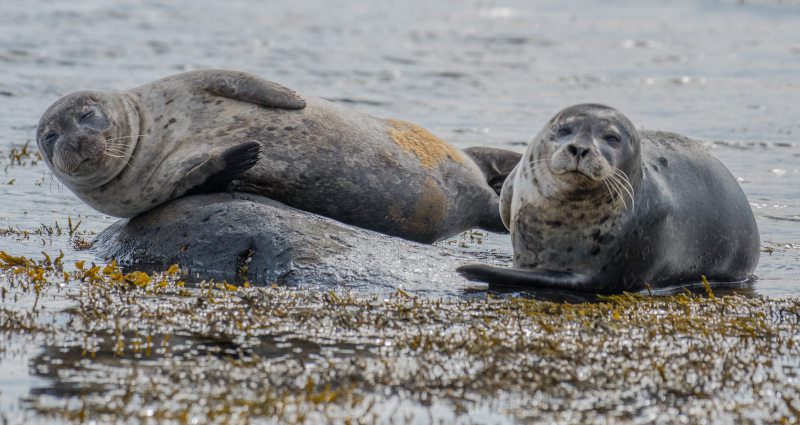
Hvammstangi is home to the Icelandic Seal Centre, where you can learn about the country’s seal species before heading out to some of the best viewing spots along the Vatnsnes Peninsula. The surrounding coastline offers a mix of sandy beaches and rocky outcrops where both harbour and grey seals haul out to rest.
Many seals are naturally curious, often popping their heads above the water to watch you just as intently as you watch them. Visiting in a campervan means you can explore multiple seal-watching sites in one day, linger during quieter times for better sightings, and even wake up to a seal-filled view right from your doorstep. And, yes, you can often spot these cheeky little guys bobbing around the waters of Reykjavík to surprise some unsuspecting tourists.
6. Birdlife in Mývatn and Surrounding Wetlands
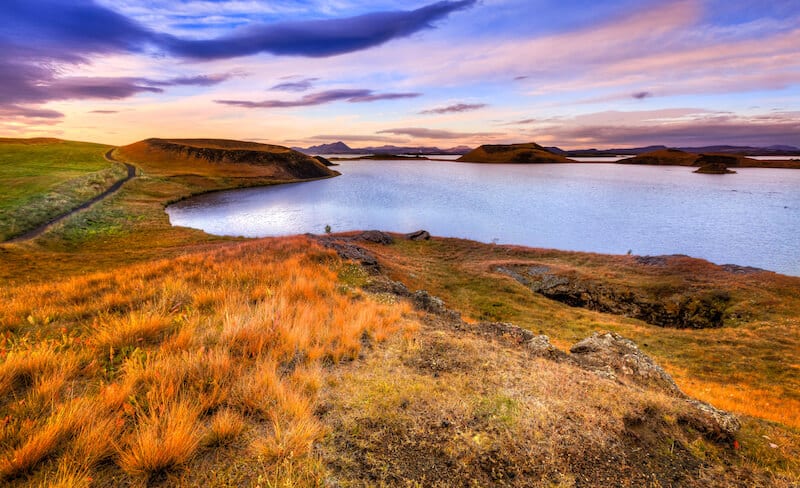
Mývatn is a paradise for birdwatchers in summer, hosting over 115 species across its wetlands, lava formations, and shallow waters. It’s one of the best places in Europe to see rare ducks like the harlequin and Barrow’s goldeneye, alongside a variety of waders, divers, and other migratory species. The long daylight hours make it ideal for photography, and travelling by campervan allows you to explore the surrounding nature reserves at different times of day to camp in amongst these unpredictable flying feather balls (not a description that would suit your David Attenborough accent).
Combining Wildlife Watching With the Northern Lights
One of the biggest perks of travelling Iceland in a campervan is that you can combine two of the country’s most magical experiences in a single trip. For instance, you might get the rub of the green on a given day to watch a herd of reindeer graze under a dusky winter sky, then moments later step outside your camper to see the first flickers of the aurora. This pairing is easiest in remote regions where wildlife is active and light pollution is minimal, giving you uninterrupted views of both. Plan your days for wildlife and your nights for the skies, and you’ll return home with stories few travellers can match (not that that’s what it’s all about…but it helps!)
Best Wildlife Spots With Minimal Light Pollution
If you want to combine wildlife spotting with Northern Lights viewing in a single trip, head for remote regions like the Westfjords or Eastfjords. Here, minimal light pollution and wide-open landscapes create perfect conditions for both.
You can imagine getting a glimpse of Arctic foxes emerging to hunt at dusk, then staying put as the night sky erupts in ribbons of green and purple. Alright, alright, I’ll be honest with you, you’re not getting your campervan (nor any vehicle) onto Hornstrandir, so this may be wishful thinking. But, you can certainly combine it in the day’s activities if the nature and weather gods play ball, that is.
Happy Campers’ Winter Campervan Options for Wildlife Adventures
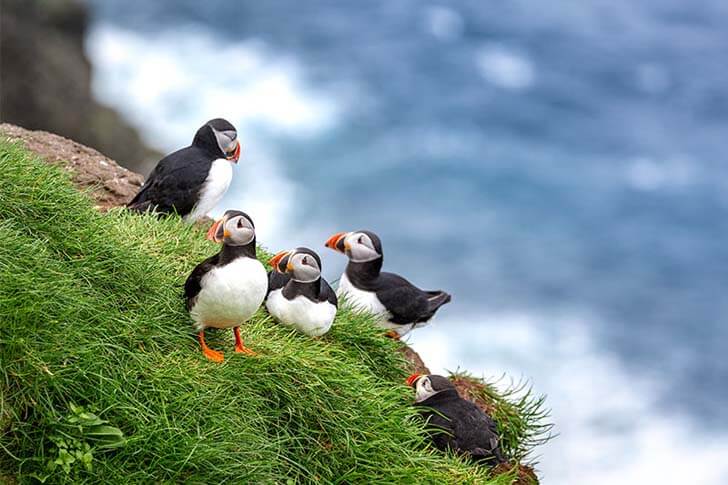
When temperatures drop and daylight hours shrink, the right campervan can turn a winter wildlife trip from a chilly challenge into a cosy, unforgettable adventure. Happy Campers’ winter fleet is kitted out with powerful heating systems, quality insulation, and winter tyres to keep you safe, comfortable, and well-gripped on icy roads.
You’ll have the freedom to reach remote wildlife hotspots others can’t easily access, park overnight near prime viewing areas, and wake up to the sound of seals on the beach or the sight of reindeer outside your window. With the Northern Lights (potentially) overhead some nights and Iceland’s wild residents just steps away, it’s the ultimate way to combine comfort with adventure.
Essential Gear for Wildlife and Northern Lights Photography

A good zoom lens, sturdy tripod, and plenty of memory cards are your best friends when it comes to wildlife and Northern Lights photography. For aurora shots, you’ll need a camera with excellent low-light performance and the ability to adjust manual settings for longer exposures. Wide-angle lenses can capture both the landscape and the lights in one frame, while extra batteries are essential in cold weather as they drain faster (the amount of times I’ve been disappointed to see my timelapse cut short by these stupidly cold temperatures!) Happy Campers can provide inverters to keep your gear charged wherever you park, so you’re always ready to capture that once-in-a-lifetime moment.
If you’re coming between late August to April with the intent of snapping both the wildlife and the lights, I’d recommend you consider bringing the following:
- DSLR Camera – full frame is better for image quality.
- Wide Angle Lens – perfect for the Northern Lights.
- Telephoto Lens – awesome for wildlife photography – the longer focal range, the better (there’s more information on this further down).
- A sturdy tripod – maybe your grip at times on any long exposures against the perilous Icelandic winds.
- Extra batteries – be better than the cold!
Responsible Wildlife Watching in Iceland
Experiencing Iceland’s wildlife is a privilege, and with that comes the responsibility (to quote Uncle Ben) to protect it for future generations. Travelling by campervan means you can reach many of Iceland’s remote habitats with ease, but it also means being extra mindful of your impact. Whether you’re parked near a seal colony or watching birds on a cliff, following ethical guidelines ensures the animals remain undisturbed and their habitats intact. Respect for nature here isn’t just a suggestion; it’s part of the Icelandic way of life, and you can be sure the people will also let you know that if you break any of the rules.
Keeping a Safe and Respectful Distance
Always give animals plenty of space; it’s not just about keeping yourself safe, but also about preventing stress or disruption to the wildlife’s natural behaviour. Even seemingly calm animals can be unsettled by close human presence, which can affect their feeding, breeding, or care of young. Use binoculars or a good zoom lens to observe from a respectful distance, allowing you to enjoy intimate views and great photos without intruding on their world.
Supporting Conservation Efforts Through Sustainable Travel
Choose tours and guides that follow ethical practices, employ knowledgeable local experts, stick to marked paths, and avoid disturbing habitats or wildlife. Opt for operators who contribute a portion of their proceeds to local conservation projects or research initiatives as well, if you can find them. Even simple choices like staying at eco-certified campsites or reducing single-use plastics during your trip can directly support the protection of Iceland’s fragile ecosystems for future generations.
Planning Your Iceland Wildlife Campervan Trip
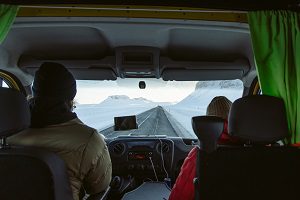
Your adventure starts long before you set foot in Iceland; the planning stage is where you can set yourself up for the most rewarding encounters. Think about the species you most want to see, and map your route around their seasonal hotspots.
Travelling by campervan gives you the luxury of flexibility, so you can change plans when you need to, particularly if a local guide tips you off to a whale pod offshore or a rare bird sighting. Factor in daylight hours, road conditions, and even moon phases if Northern Lights photography is on your list. With smart planning, you can maximise your time in the wild and still enjoy all the comforts of your mobile base.
Suggested Routes for Wildlife-Rich Regions
Follow the Ring Road for a well-rounded wildlife tour that takes in puffin cliffs, whale-watching harbours, and volcanic landscapes, all linked by well-maintained roads.
If you crave more seclusion and rarer species encounters, venture into the Westfjords and Eastfjords, where fewer tourists mean better chances for undisturbed sightings and more intimate moments with nature (I’d highly recommend the summer season if you are planning a jaunt to the remote Westfjords, as well as factoring in a few extra days to your itinerary). With a Happy Campers camper, you can combine these routes into a flexible, personalised itinerary, taking advantage of our expert route guides to pinpoint seasonal wildlife hotspots, prime viewing times, and hidden gems you’d likely miss on a fixed tour.
Campsites Near Prime Wildlife Spots
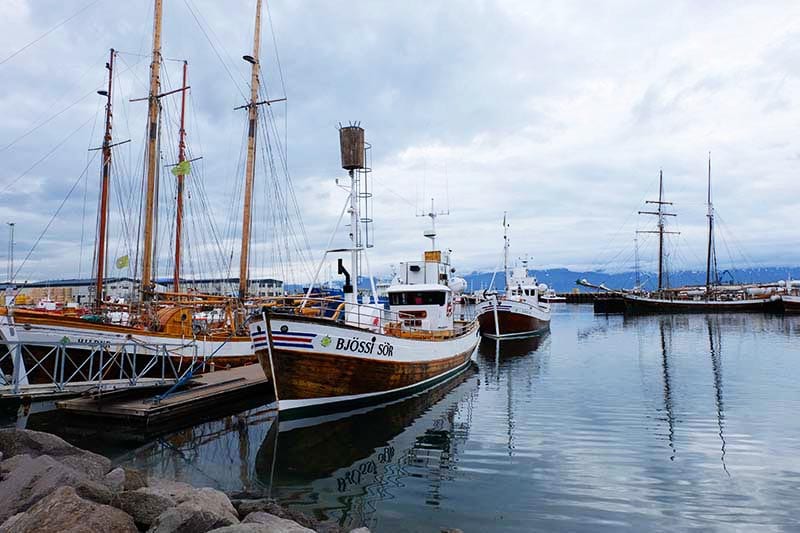
Stay at campsites close to key wildlife hotspots like Húsavík, Lake Mývatn, or the Westman Islands to maximise your time in the field and minimise travel between sightings.
Aim to arrive in the late afternoon or evening, so you can start your day in a prime position when animals are most active at dawn (like my cat that I can’t get away from in the mornings). Choose sites with easy access to walking trails, viewing platforms, or boat tours, and keep your camera gear at the ready so you can react quickly if wildlife appears unexpectedly nearby. This approach not only increases your chances of memorable encounters but also allows you to enjoy quieter, less-crowded experiences, whilst perfecting that National Geographic reflex (you’ll be changing lenses faster than an F1 engineer changes tyres).
Packing Essentials for Wildlife Viewing and Photography
When preparing for wildlife adventures in Iceland, it’s not just about what you bring, but how you use it (and who you bring, a distant third – joking!) The right gear can make the difference between a fleeting glimpse and an unforgettable, frame-worthy shot.
By planning beyond just the basics, you’ll be ready for long hours in unpredictable weather, quick changes in lighting, and those rare moments when wildlife appears out of nowhere. Keep your kit organised and accessible, and always balance being prepared with travelling light enough to move easily over Iceland’s rugged terrain. After all, Iceland is an adventure destination, not the over-packing Olympics.
Equipment to Bring For Wildlife Photography in Iceland
For the best wildlife shots, bring a DSLR or mirrorless camera with interchangeable lenses. Include:
- Telephoto lens (at least 300mm) for distant subjects.
- Wide-angle lens for capturing animals within their landscapes.
A sturdy, weather-resistant tripod is vital for stability in Iceland’s winds, and a remote shutter release will help reduce camera shake (but if you’ve splashed out on a full-frame camera, this will likely be inbuilt).
Also, consider protecting your gear with waterproof camera covers or dry bags, and use polarising filters to cut glare from water or ice if you’re serious (and extra serious) about the shot. Bring plenty of spare batteries and memory cards, of course. Don’t forget a soft lens cloth for clearing mist or drizzle (I usually opt for my t-shirt though), and a lightweight backpack for carrying gear on hikes to remote viewing points.
For comfort in the field, pack:
- Warm, waterproof layers and insulated jackets (you can never have enough layers in Iceland).
- Windproof outerwear.
- Sturdy, broken-in hiking boots for wet and uneven terrain.
- Quality binoculars for distant sightings of the sneakiest of creatures (while they….sneak).
- Optional spotting scope for dedicated birdwatchers.
- High-energy snacks and a reusable water bottle.
- Rain gear, extra gloves, and a hat to stay comfortable and safe.
Iceland’s weather can change from sunny to stormy in minutes, so keeping this gear close at hand ensures you’re ready for both perfect shots and sudden shifts in the elements, which can impact your visibility as well as your morale in a fraction of a gust of wind.
Final Thoughts: See Iceland’s Wild Side Your Way
With a campervan, you’re free from fixed schedules and locations; your itinerary can be as wild as the landscapes you’re exploring. You can follow seasonal migrations across the island, adjust your route to chase the best weather, and set up camp in more secluded spots where wildlife is most active. One day, you might be sipping morning coffee while the clowns of the sea (puffins, not your significant other) wheel overhead, and the next night you could be wrapped in a blanket, watching the green glow of the Northern Lights ripple above a herd of reindeer. With your bed, kitchen, and viewing platform all in one, Iceland’s wild side is now simply right outside your campervan door, so open up and book yours today.
Back